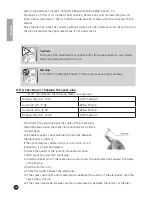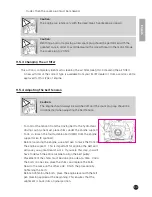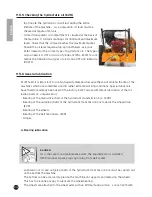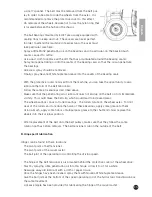
20
English
Warning:
Under certain conditions, petrol is extremely flammable and explosive. Fire and
explosions caused by petrol can result in serious burns or damage to property.
The following points should therefore be taken into consideration:
• Topping up with petrol should never take place while the engine is rotating.
• Always allow the engine to cool off for a few minutes before topping up with fuel.
• Only use fresh petrol.
• For environmental reasons, ELIET recommends the use of unleaded petrol. Additives may be
added in order to extend the freshness life.
• Store petrol in an approved tank. Keep this tank out of reach of children.
• Never top up with petrol in a place where work will be carried out later. Keep a distance of at
least 10 metres away from a chosen working area. This to prevent any fire risk.
• Clean the area around the fuel tank cap and remove it. Do not fill the tank up completely. Fill it
up till the fuel is about 10mm away from the top edge. In other words, do not fill the tank right
up to the opening.
• Always use a funnel or spout to pour the petrol into the tank. Suitable funnels can be obtained
from your ELIET dealer.
• Replace the cap on the tank as soon as possible. If petrol is spilt during filling, the engine must
be cleaned immediately.
• Also, ensure clothing does not come into contact with petrol. If this does happen, clothing
should be changed immediately.
• It is unsafe and therefore expressly forbidden to fill the tank in the vicinity of smokers or a
naked flame.
• A doctor should be consulted immediately if fuel is swallowed or comes into contact with eyes.
9.3 Preparing the work site
• Never work when light intensity is below 500 Lux.
• Besides the machine, the work area must also comply with certain conditions; these must be
verified prior to starting the work.
• Examine the work area and remove any movable objects prior to operation.
• Ensure that you are familiar with areas that might cause damage to property and that precau-
tions are made.
• A careful work plan should be part of the operation: determine which route will be followed for
efficient removal or heaping up of leaves and dirt.
9.4 Starting the engine
















































